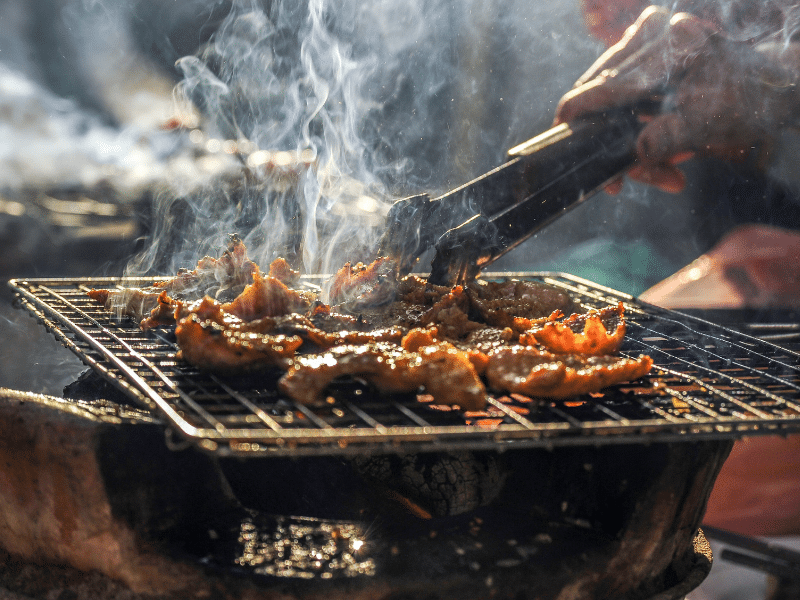Cold smoking:
Think of cold smoking with meats such as ham and salmon. Generally the meat is first treated with a salty “brine”, then smoked at a maximum temperature of about 90 degrees Fahrenheit or 32 degrees Celsius for a long period of time. Think on earlier days when many households had a ham dangling in their chimney. My grandmother used to do this and I must say that her smoked ham was the best I have ever tasted. The meat is thereby not dried, but preserved with the smoke penetrating deep into the flesh. Above the temperature of 32 degrees Celsius the structure of proteins will change giving you another result.
 Hot smoking:
Hot smoking:
Hot smoking takes place at a temperature of 175 degrees Fahrenheit or 80 degrees Celsius, and lasts for a few hours. The smoking time depends on the size of the cut and the type of meat. The bigger the meat is cut the longer the smoking process takes. 24 hours is an exception, but it is not impossible.
Barbecue:
A light smoking can be done while barbecuing by adding wet woodchips to the hot coals and allowing the smoke they generate to permeate the meat. The meat is fully cooked, but is not really suitable for long term conservation. So, it should not be stored in the fridge for weeks. Meat for barbecue can first be marinated (not to be confused with a brine, which has a different purpose).
Every smoking technique has its own charm, plus and minus points.
Each of these techniques does not take place at a fixed temperature, but within a general range. Sometimes there is also an overlap with the different techniques. As mentioned, some people find smoking ideal and another person likes the barbecue technique better. Personally, I make a distinction on the target rather than cooking temperature before I choose the technique. Barbecue is usually eaten hot, hence immediately, or within a few days. I use the smoking technique when trying to make a long shelf life. Usually we eat our smoked products cold with nice toppings on bread. Thanks to the refrigerator and freezer we can now keep both BBQ and smoked products for a long time.
Now that the differences in types of smoking are known, it is time to determine what we are going to do here.
Cold smoking is interesting in itself, but it has too many downsides for me . Cold smoking takes much longer and as a busy person one simply has no time for it. A salmon can take several days, and a whole ham may even take weeks. Plus to keep a fire going for that long is not that easy. I also wonder what neighbors will think of the smell that comes from my smoker. Especially when smoking fish, it gives off a considerable odor. It is also a problem to keep a constant temperature going.
So the conclusion is simple: On this site, you will find mainly information about hot smoking techniques.
Warning
I also have a warning for those who want to enter the world of smoking. The treatment of meat and fish at a low temperature for a long period increases the risk of spoilage. If you do not know what you’re doing – in cold smoking especially – you had best use a brine to prevent spoilage. Botulism does not smell or taste , but can be deadly.



